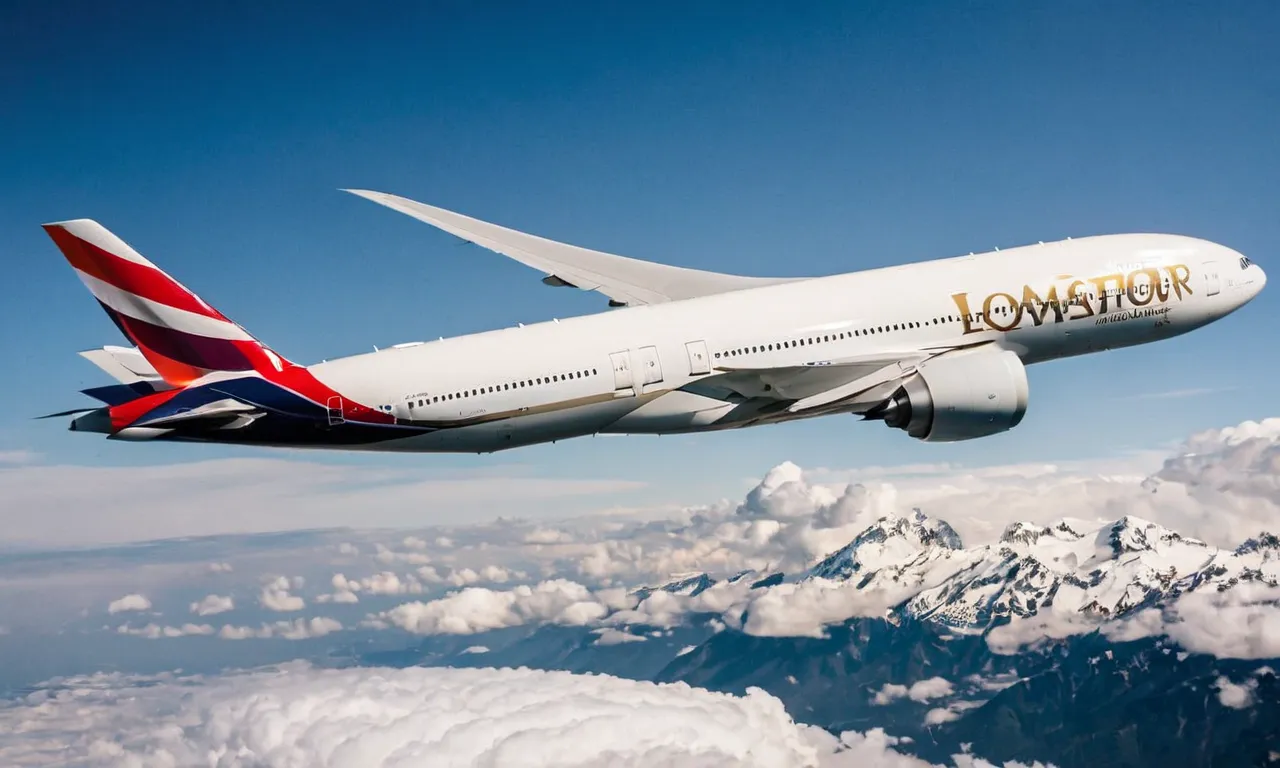Boeing 777 Vs Airbus A380: How Do The Two Widebody Jets Compare?
The Boeing 777 and Airbus A380 are two of the most popular widebody passenger jets flying today. With their massive size and incredible range capabilities, these giants of the skies have become staples for many international airlines.
If you’re short on time, here’s a quick answer: While the 777 and A380 share similarities in size and mission capabilities, the 777 is smaller and more fuel efficient while the A380 carries more passengers.
The 777 is also more versatile and has sold over 2,000 units compared to just over 300 orders for the A380.
Background and Development
Boeing 777 Background
The Boeing 777, often referred to as the “Triple Seven,” is a widebody twin-engine jet airliner that was developed by Boeing Commercial Airplanes. It was first introduced in 1994 and has since become one of the most popular and successful aircraft in the industry.
The 777 was designed to fill the gap between the smaller 767 and larger 747 models, offering airlines a versatile and efficient option for long-haul flights.
The development of the Boeing 777 was driven by the need for improved fuel efficiency and increased passenger capacity. Boeing incorporated several innovative technologies into the aircraft, such as the extensive use of lightweight materials, advanced aerodynamics, and more efficient engines.
These advancements allowed the 777 to offer significant fuel savings compared to older models, reducing operating costs for airlines.
The Boeing 777 has undergone several updates and enhancements over the years, resulting in different variants with varying passenger capacities and range capabilities. As of 2021, the latest model, the Boeing 777X, is currently in development and is expected to enter service in the near future.
The 777X boasts even greater fuel efficiency and improved passenger comfort, making it a highly anticipated addition to the Boeing lineup.
Airbus A380 Background
The Airbus A380, also known as the “Superjumbo,” is a double-deck, widebody, four-engine jet airliner that was developed by the European aircraft manufacturer Airbus. It made its first flight in 2005 and was introduced into commercial service in 2007.
The A380 was designed to address the growing demand for air travel and the need for larger aircraft to accommodate increasing passenger numbers.
The development of the Airbus A380 was a massive undertaking, involving collaboration between numerous international partners and suppliers. The aircraft’s unique design, with its double-deck configuration, allowed for a significant increase in passenger capacity compared to other commercial jets.
The A380 can carry up to 853 passengers in a typical configuration, making it the largest passenger aircraft in the world.
The Airbus A380 also incorporated several technological advancements to improve fuel efficiency and reduce noise and emissions. It features a highly efficient wing design, advanced materials, and quieter engines, all aimed at delivering a more sustainable and environmentally friendly flying experience.
Despite its impressive size, the A380 has proven to be a remarkably agile and efficient aircraft, capable of operating on long-haul routes with great efficiency.
Size and Capacity
Physical Dimensions
When it comes to the physical dimensions, the Boeing 777 and the Airbus A380 are quite different. The Boeing 777 is a smaller widebody jet, measuring around 209 feet in length and 199 feet in wingspan.
On the other hand, the Airbus A380 is the largest passenger aircraft in the world, with a length of approximately 238 feet and a wingspan of about 261 feet. The A380’s sheer size is truly impressive, and it can easily be spotted at airports due to its double-deck design.
Passenger and Cargo Capacity
Both the Boeing 777 and the Airbus A380 are designed to carry a large number of passengers, but the A380 takes the lead in terms of capacity. The A380 can accommodate up to 853 passengers in a typical three-class configuration, while the Boeing 777 can carry around 396 to 550 passengers, depending on the variant.
The A380’s spaciousness allows airlines to offer more comfortable seating arrangements and amenities, such as lounges and bars, on board.
When it comes to cargo capacity, the Boeing 777 has an advantage. It can carry a significant amount of cargo in its spacious belly, making it a preferred choice for airlines that prioritize cargo transportation. The A380, although it has a large passenger capacity, has a slightly smaller cargo hold.
It’s worth noting that these figures can vary depending on the configuration chosen by each airline. Some airlines opt for more spacious seating arrangements, reducing the total number of passengers that can be accommodated.
For more detailed information on the physical dimensions and passenger and cargo capacity of the Boeing 777 and the Airbus A380, you can visit the official websites of both manufacturers: https://www.boeing.com/commercial/777/ and https://www.airbus.com/aircraft/passenger-aircraft/a380-family.html.
Performance and Efficiency
Engines and Fuel Efficiency
When it comes to performance and efficiency, both the Boeing 777 and the Airbus A380 have their own strengths. The Boeing 777 is equipped with powerful engines that provide excellent thrust and fuel efficiency.
With its GE90 engines, the Boeing 777 can reach speeds of up to Mach 0.84 and has a range of approximately 7,370 nautical miles. On the other hand, the Airbus A380 is powered by four engines, typically either Rolls-Royce Trent 900 or Engine Alliance GP7200 engines.
These engines offer impressive fuel efficiency and provide the necessary power for the A380 to carry its massive payload.
In terms of fuel efficiency, the Airbus A380 has an advantage over the Boeing 777. The A380 is designed to carry a larger number of passengers, which means that it can transport more people per gallon of fuel burned.
This makes the A380 a more environmentally friendly option, as it helps reduce carbon emissions per passenger.
Range and Speed
When it comes to range and speed, the Boeing 777 and the Airbus A380 have different capabilities. The Boeing 777 has a slightly higher cruising speed compared to the Airbus A380. It can reach speeds of up to Mach 0.84, whereas the A380 has a cruising speed of Mach 0.85.
While this may not seem like a significant difference, it can affect flight times on long-haul routes.
In terms of range, the Boeing 777 has a slight advantage. It has a maximum range of approximately 7,370 nautical miles, allowing it to connect distant destinations without the need for refueling. The Airbus A380, on the other hand, has a maximum range of around 8,000 nautical miles, making it suitable for ultra-long-haul flights.
It’s important to note that the range and speed of both aircraft can vary depending on factors such as payload, weather conditions, and flight routing. Airlines also have the option to choose different engine options and configurations, which can further impact performance and efficiency.
Orders and Deliveries
When it comes to orders and deliveries, both Boeing 777 and Airbus A380 have had their fair share of success in the market.
Boeing 777:
The Boeing 777 has been a popular choice among airlines around the world. Since its introduction in 1995, Boeing has received over 2,000 orders for the 777 series. This impressive number speaks volumes about the aircraft’s reliability, performance, and passenger appeal.
In terms of deliveries, Boeing has successfully delivered more than 1,700 Boeing 777s to airlines worldwide. This makes it one of the most widely used widebody jets in the industry.
For more detailed information on the orders and deliveries of Boeing 777, you can visit the Boeing Commercial Airplanes website.
Airbus A380:
The Airbus A380, on the other hand, has had a more limited success in terms of orders and deliveries. Despite its impressive size and capacity, airlines have been more cautious in placing orders for the A380.
As of now, Airbus has received around 300 orders for the A380. This is significantly lower compared to the Boeing 777. However, it’s worth noting that the A380 is designed for long-haul flights and caters to a specific market segment.
In terms of deliveries, Airbus has delivered around 240 A380s to various airlines. While the numbers may not be as high as the Boeing 777, the A380 still remains an iconic and recognizable aircraft in the industry.
To learn more about the orders and deliveries of Airbus A380, you can visit the Airbus website.
Comparison:
When comparing the orders and deliveries of Boeing 777 and Airbus A380, it is clear that the Boeing 777 has been the preferred choice among airlines. Its higher number of orders and deliveries highlight the trust and confidence airlines have in this aircraft.
However, it’s important to note that the A380 caters to a specific market segment that requires large capacity and long-haul capabilities. Despite its lower numbers, the A380 remains a unique and remarkable aircraft in the aviation industry.
Cost and Airline Use
Purchase Price
When it comes to the purchase price, the Boeing 777 and the Airbus A380 differ significantly. The average price of a Boeing 777 ranges from $277.3 million to $361.5 million, depending on the variant and customization options.
On the other hand, the Airbus A380 comes with a hefty price tag of around $445.6 million to $458.7 million. The higher price of the A380 can be attributed to its larger size and capacity.
Operating Costs
While the purchase price is a crucial factor, airlines also consider the operating costs when deciding between the Boeing 777 and the Airbus A380. The Boeing 777 is known for its fuel efficiency, thanks to its advanced engines and lightweight construction.
This translates to lower fuel expenses for airlines. In contrast, the A380, with its larger size and higher capacity, tends to have higher operating costs, especially in terms of fuel consumption and maintenance.
Notable Airline Operators
Several major airlines around the world operate both the Boeing 777 and the Airbus A380, each choosing the aircraft that best suits their specific needs. Some notable airlines that have incorporated the Boeing 777 into their fleet include Emirates, United Airlines, and Cathay Pacific.
These airlines appreciate the 777’s versatility and range, making it suitable for long-haul flights.
On the other hand, the Airbus A380 has gained popularity among airlines seeking to offer a luxurious and spacious travel experience for their passengers. Emirates is the largest operator of the A380, with over 100 aircraft in its fleet.
Other notable carriers include Singapore Airlines and Qantas, which have also embraced the A380’s capability to accommodate a large number of passengers.
For more detailed information on specific airlines and their use of these widebody jets, you can visit the official websites of Boeing and Airbus.
Conclusion
While the 777 and A380 have similarities, they serve different airline needs. The A380 carries more passengers but the 777 offers greater efficiency and versatility. Airlines must weigh capacity against frequency when deciding between these two modern widebodies.
With over 2,000 orders, the 777 has seen greater commercial success than the A380, which has struggled with weaker than expected sales. Yet both aircraft have reshaped long-haul flying with their spacious cabins and efficient operations.







